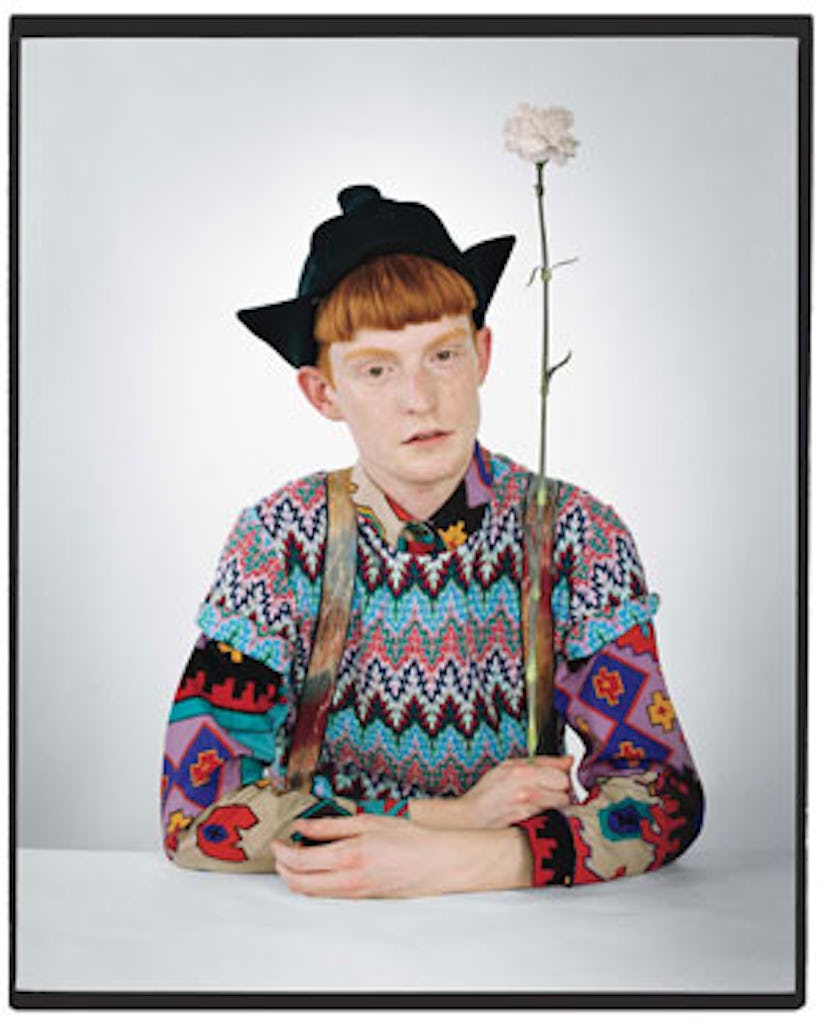Paris has chic. New York has glamour. Los Angeles has movie stars. But London has mobile, perambulating works of art.
Studying a bunch of London postcards from the end of the Seventies, with their bondage- trousered, finger-saluting “Greetings From London” punks, it dawned on me that tourists back then were just as interested in street culture as they were in Big Ben. Huge numbers of people were hauling themselves across oceans and continents to gawk at the city’s exotic extraterrestrial exhibitionists. (It must have made for some strange moments at the English Tourist Board: “Might Her Majesty pose with a safety pin in her nose?”) Ten years before, during the Swinging Sixties, visitors had gone straight from Heathrow to Carnaby Street—a place that Charles Dickens dismissed as “a bygone, faded, tumbledown street”—in the hope of spotting groovy Mods and miniskirted, mascara-wearing dolly birds.
Londoners, on the other hand, have seen it all before, or so they would have us think. When I first came to Britain from the States in 1969—a hippie with waist-length hair and bell-bottom jeans so patched that none of the original denim was showing—I couldn’t believe that no one shouted “Get a haircut!” as they did back home. Traveling through Europe my girlfriend and I had experienced Germans at the Hamburg train station inspecting us like animals in a zoo. But when we got to London, we suddenly became invisible.
This calculated tolerance is probably a response to centuries of relentless sartorial conformity, unequaled anywhere else in the world. Whether it was the bowler-hatted businessman or the flat-capped workman, everyone in Britain was a stereotypical representative of his class—no one a particular person. Until, that is, the dam burst some five decades ago. And once the genie of personal identity was let out of the bottle, there was no putting it back.
Since then, the city has been a wellspring of mind-boggling street style. Picture John Lydon (just another weird London kid, not yet the Sex Pistols’ Johnny Rotten) strolling down the King’s Road in 1975 sporting fluorescent green hair and a ripped-up suit. People obviously noticed, but to stop and point would have been to act like a country bumpkin—or, worse, a tourist. Overreacting is just not the thing to do. Keep calm and carry on.
Ironically, this can make the British capital hell on earth for exhibitionists. Three Italian ladies, friends of mine, came to London in the Nineties. Slightly punkish, they were thrilled at how free they were to dress and adorn themselves without attracting stares, eliciting wolf whistles, and more. But then a terrible existential angst enveloped them: Their addictive need for attention unfulfilled, they entered a period of no-holds-barred stylistic excess until their pervy clothes, shaved heads, and multiple piercings obliged even the most jaded Londoner to pay attention. One time, as we rode the train to Heathrow, a middle-class Italian couple consoled each other that, safely back on the Continent, they would be rid of degenerate British freaks. My friends put them right, in Italian, just as we pulled into Terminal 1.
In fact, many of London’s most intrepid style pioneers (starting, arguably, with Oscar Wilde) have come from abroad—unconventional types looking for tolerance but then caught in a desperate struggle to regain the attention that, like blood to vampires, sustains them.
Think of Leigh Bowery, who traded sunny Australia for London in 1980. I remember glancing out the window of some club one night and seeing him in the street below—alone, tottering on stiltlike platform boots, his shaved head adorned with molten wax, his finger-length eyelashes sparkling with radioactive pixie dust—and wondering if he would ever succeed in getting a taxi. But just then, succumbing to his magical powers, one pulled up and he jackknifed himself into it.
That spirit is alive and well today, as is beautifully demonstrated in these photos of kids in London’s East End. But what is different is their breathtaking sense of individualism. Once we had style tribes: Teddy Boys, Mods, glam rockers, punks, goths, ravers, you name it. Now there is a fierce determination to go it alone.
That brave, look-at-me-damn-it confidence is popping up throughout the global village; the most daring looks are immediately posted on the Internet for everyone to see. All sorts of people in all sorts of places increasingly thumb their nose at the dictates of the so-called fashion professionals and just do it themselves. Passive fashion victims are going the way of the muumuu.
What we have here is a collection of delightfully unclassifiable individuals who use their eclectic choice of garments, accessories, and body decorations to transmit a one-of-a-kind personal statement—each one becoming a distinct brand. In this they are operating within a proud tradition of visual daring and articulation. More often than not they throw in a good dollop of humor—which is, of course, the London way. For isn’t John Lydon’s ripped and safety-pinned business suit one of the all-time great visual jokes?
